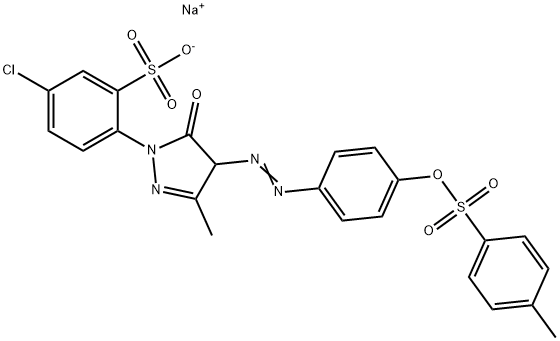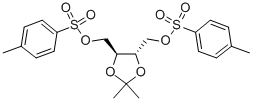Methyl methanesulfonate
Synonym(s):Methanesulfonic acid methyl ester;Methanesulfonic acid methyl ester, MMS;Methyl methanesulfonate
- CAS NO.:66-27-3
- Empirical Formula: C2H6O3S
- Molecular Weight: 110.13
- MDL number: MFCD00007557
- EINECS: 200-625-0
- SAFETY DATA SHEET (SDS)
- Update Date: 2024-12-18 14:08:52

What is Methyl methanesulfonate?
Chemical properties
colourless liquid
Chemical properties
Clear, colorless to amber liquid.
The Uses of Methyl methanesulfonate
Methyl methanesulfonate is a DNA adduct that adds methyl groups to Dan at 7-guanine, 3-guanine and 3-adenine.
The Uses of Methyl methanesulfonate
Experimentally as mutagen, teratogen, brain carcinogen.
What are the applications of Application
Methyl methanesulfonate is a DNA adduct that adds methyl groups to Dna at 7-guanine, 3-guanine and 3-adenine
Definition
ChEBI: A methanesulfonate ester resulting from the formal condensation of methanesulfonic acid with methanol.
General Description
Colorless to amber liquid.
Air & Water Reactions
Water soluble.
Reactivity Profile
Methyl methanesulfonate is incompatible with strong oxidizing agents, strong acids and strong bases.
Fire Hazard
Methyl methanesulfonate is combustible.
Safety Profile
Confirmed carcinogen with carcinogenic and neoplastigenic data. Poison by ingestion, intraperitoneal, intravenous, and subcutaneous routes. Human mutation data reported. Experimental teratogenic and reproductive effects. When heated to decomposition it emits toxic fumes of SOx.
Potential Exposure
Research chemical and cancer drug. No longer produced commercially in the United States.
Carcinogenicity
Methyl methanesulfonate is reascarcinogen based on sufficient evi onably anticipated to be a human dence of carcinogenicity from studies in experimental animals.
Shipping
UN2810 Toxic liquids, organic, n.o.s., Hazard Class: 6.1; Labels: 6.1-Poisonous materials, Technical Name Required.
Purification Methods
Purify the ester by careful fractionation and collecting the middle fraction. Suspected CARCINOGEN. Note that MeSO3H has b 167-167.5o/10mm and methanesulfonic anhydride has b 138o/10mm)—both are possible impurities. [Beilstein 4 IV 11.]
Incompatibilities
Incompatible with oxidizers (chlorates, nitrates, peroxides, permanganates, perchlorates, chlorine, bromine, fluorine, etc.); contact may cause fires or explosions. Keep away from alkaline materials, strong bases, strong acids, oxoacids, epoxides. Esters are generally incompatible with nitrates. Moisture may cause hydrolysis or other forms of decomposition
Waste Disposal
It is inappropriate and possibly dangerous to the environment to dispose of lab chemicals or expired or waste drugs and pharmaceuticals by flushing them down the toilet or discarding them to the trash. Household quantities of expired or waste pharmaceuticals may be mixed with wet cat litter or coffee grounds, double-bagged in plastic, discard in trash. Larger quantities shall carefully take into consideration applicable DEA, EPA, and FDA regulations. If possible return the pharmaceutical to the manufacturer for proper disposal being careful to properly label and securely package the material. Alternatively, the waste pharmaceutical shall be labeled, securely packaged, and transported by a state licensed medical waste contractor to dispose by burial in a licensed hazardous or toxic waste landfill or incinerator.
Properties of Methyl methanesulfonate
| Melting point: | 20°C |
| Boiling point: | 202-203 °C(lit.) |
| Density | 1.3 g/mL at 25 °C(lit.) |
| vapor pressure | 0.8 hPa (59 °C) |
| refractive index | n |
| Flash point: | 220 °F |
| storage temp. | Store below +30°C. |
| solubility | 200g/l |
| form | Liquid |
| color | Colorless to pale yellow |
| Water Solubility | 200 g/L (20 ºC) |
| Merck | 14,6097 |
| BRN | 1098586 |
| Stability: | Stable. Combustible. Incompatible with strong oxidizing agents, strong acids, strong bases. |
| CAS DataBase Reference | 66-27-3(CAS DataBase Reference) |
| NIST Chemistry Reference | Methanesulfonic acid, methyl ester(66-27-3) |
| IARC | 2A (Vol. 7, Sup 7, 71) 1999 |
| EPA Substance Registry System | Methyl methanesulfonate (66-27-3) |
Safety information for Methyl methanesulfonate
| Signal word | Danger |
| Pictogram(s) |
 Skull and Crossbones Acute Toxicity GHS06  Health Hazard GHS08  Environment GHS09 |
| GHS Hazard Statements |
H301:Acute toxicity,oral H315:Skin corrosion/irritation H319:Serious eye damage/eye irritation H334:Sensitisation, respiratory H340:Germ cell mutagenicity H351:Carcinogenicity H373:Specific target organ toxicity, repeated exposure H411:Hazardous to the aquatic environment, long-term hazard |
| Precautionary Statement Codes |
P201:Obtain special instructions before use. P273:Avoid release to the environment. P301+P310:IF SWALLOWED: Immediately call a POISON CENTER or doctor/physician. P302+P352:IF ON SKIN: wash with plenty of soap and water. P305+P351+P338:IF IN EYES: Rinse cautiously with water for several minutes. Remove contact lenses, if present and easy to do. Continuerinsing. |
Computed Descriptors for Methyl methanesulfonate
| InChIKey | MBABOKRGFJTBAE-UHFFFAOYSA-N |
Methyl methanesulfonate manufacturer
Vijaya Pharma And Life Science
Anand Agencies
New Products
Tert-butyl bis(2-chloroethyl)carbamate (S)-3-Aminobutanenitrile hydrochloride N-Boc-D-alaninol N-BOC-D/L-ALANINOL N-octanoyl benzotriazole 3-Morpholino-1-(4-nitrophenyl)-5,6-dihydropyridin- 2(1H)-one Furan-2,5-Dicarboxylic Acid Tropic acid Fmoc-Val-Cit-PAB DIETHYL AMINOMALONATE HYDROCHLORIDE 1,1’-CARBONYLDIIMIDAZOLE R-2-BENZYLOXY PROPIONIC ACID 1,1’-CARBONYLDI (1,2-4 TRIAZOLE) N-METHYL INDAZOLE-3-CARBOXYLIC ACID (2-Hydroxyphenyl)acetonitrile 4-Bromopyrazole 5-BROMO-2CYANO PYRIDINE 5-broMo-2-chloro-N-cyclopentylpyriMidin-4-aMine 2-(Cyanocyclohexyl)acetic acid 4-methoxy-3,5-dinitropyridine 2-aminopropyl benzoate hydrochloride 1-(4-(aminomethyl)benzyl)urea hydrochloride tert-butyl 4- (ureidomethyl)benzylcarbamate diethyl 2-(2-((tertbutoxycarbonyl)amino) ethyl)malonateRelated products of tetrahydrofuran








You may like
-
 Methyl methanesulfonate 98%View Details
Methyl methanesulfonate 98%View Details
66-27-3 -
 Methyl Methanesulphonate (MMS) extrapure CAS 66-27-3View Details
Methyl Methanesulphonate (MMS) extrapure CAS 66-27-3View Details
66-27-3 -
 Methyl Methanesulphonate (MMS) for tissue culture CAS 66-27-3View Details
Methyl Methanesulphonate (MMS) for tissue culture CAS 66-27-3View Details
66-27-3 -
 Methyl methanesulfonate 97% CAS 66-27-3View Details
Methyl methanesulfonate 97% CAS 66-27-3View Details
66-27-3 -
 Methyl methanesulfonate CAS 66-27-3View Details
Methyl methanesulfonate CAS 66-27-3View Details
66-27-3 -
 Methyl Methanesulfonate CAS 66-27-3View Details
Methyl Methanesulfonate CAS 66-27-3View Details
66-27-3 -
 Methyl methanesulphonate CAS 66-27-3View Details
Methyl methanesulphonate CAS 66-27-3View Details
66-27-3 -
 Methyl methanesulfonate CAS 66-27-3View Details
Methyl methanesulfonate CAS 66-27-3View Details
66-27-3